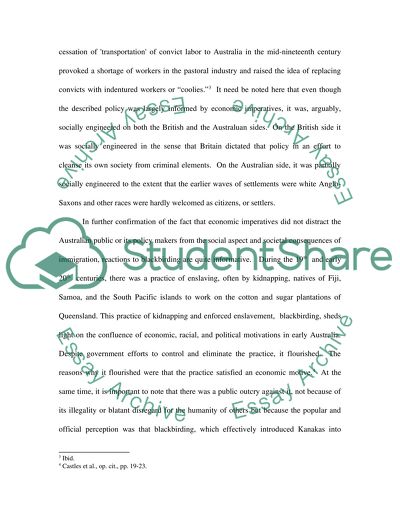Cite this document
(Migrants And Refugees In The Australian Society Essay - 1, n.d.)
Migrants And Refugees In The Australian Society Essay - 1. https://studentshare.org/history/1542806-history-subject-migrants-refugees-and-australian-society-topic-reflect-on-the-extent-to-which-australian-immigration-policy-has-been-socially-engineered
Migrants And Refugees In The Australian Society Essay - 1. https://studentshare.org/history/1542806-history-subject-migrants-refugees-and-australian-society-topic-reflect-on-the-extent-to-which-australian-immigration-policy-has-been-socially-engineered
(Migrants And Refugees In The Australian Society Essay - 1)
Migrants And Refugees In The Australian Society Essay - 1. https://studentshare.org/history/1542806-history-subject-migrants-refugees-and-australian-society-topic-reflect-on-the-extent-to-which-australian-immigration-policy-has-been-socially-engineered.
Migrants And Refugees In The Australian Society Essay - 1. https://studentshare.org/history/1542806-history-subject-migrants-refugees-and-australian-society-topic-reflect-on-the-extent-to-which-australian-immigration-policy-has-been-socially-engineered.
“Migrants And Refugees In The Australian Society Essay - 1”. https://studentshare.org/history/1542806-history-subject-migrants-refugees-and-australian-society-topic-reflect-on-the-extent-to-which-australian-immigration-policy-has-been-socially-engineered.


